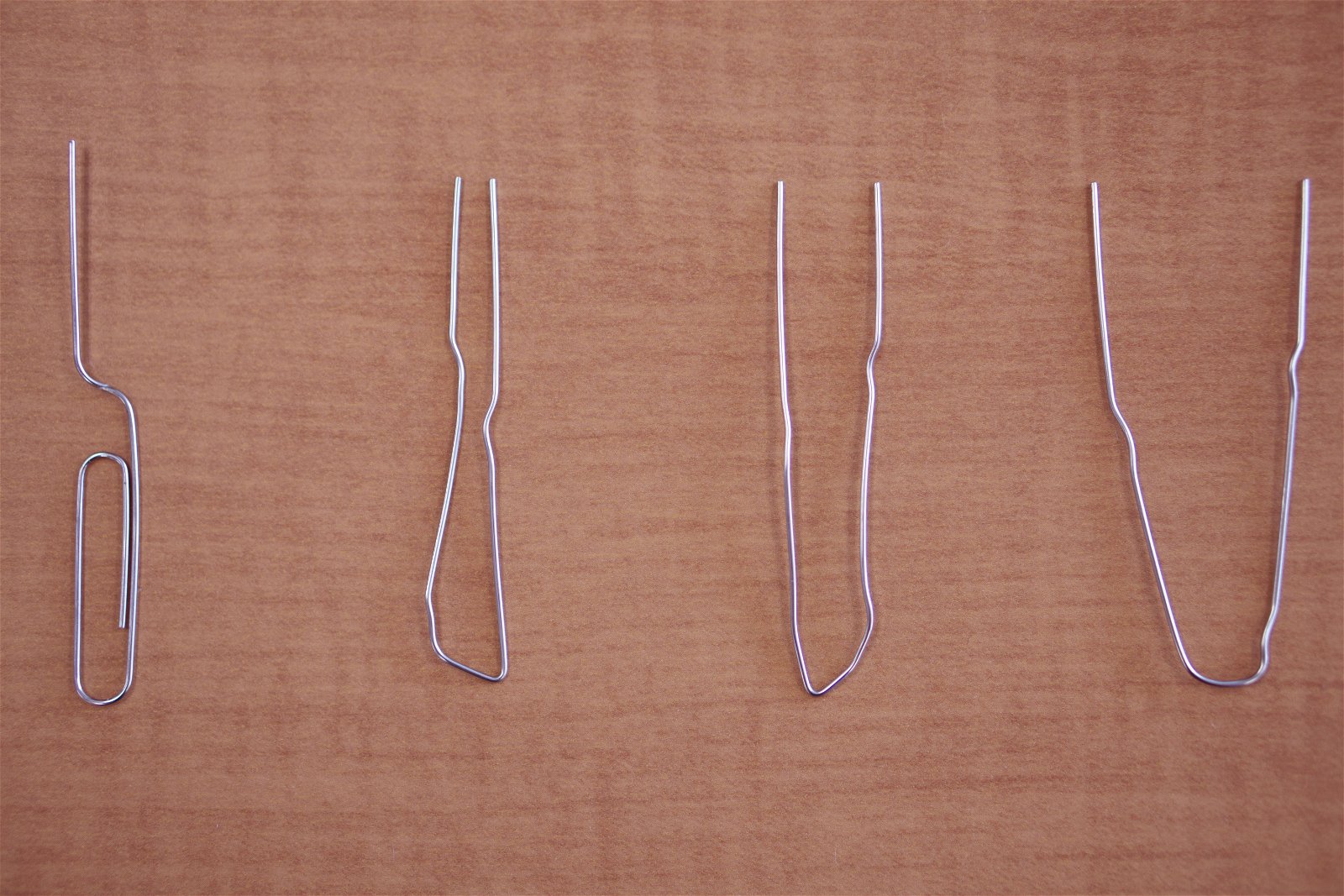You can buy ready-made touch testers, or you can make them out of simple materials. Aim for points that are precise but not sharp. We like to use sets of 4 testers: a one-point tester, and two-point testers at 5, 15, and 30 mm apart.
Here are some ideas for DIY touch testers.



